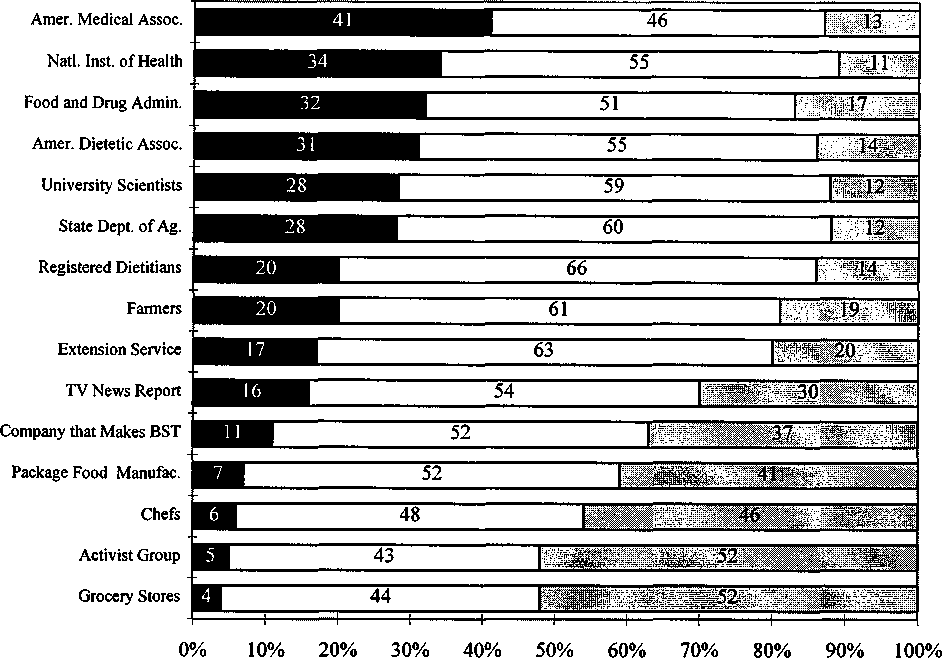8 February 1996
Journal of Food Distribution Research
Figure 6. Trust in Information Sources.

Percent Response
Source: GMA 1994.
■ ALot □Some B None
Implications and Recommendations
The results of four independent surveys in
the United States clearly show strong and endur-
ing support for the use of biotechnology. Bio-
technology has been widely used in the health
care and pharmaceutical industry for at least the
past decade. Public support for agricultural bio-
technology is almost as high as for that estab-
lished and important area. Results consistently
show that most American consumers will accept
foods developed through biotechnology.
The fact that trends are stable indicates that
the increased media coverage and attempts by
activists to create controversy have not swayed
public support. Given that awareness has not in-
creased over time, it is reasonable to conclude
that food biotechnology has not been (and never
will be) an issue for the vast majority of people.
Most people prefer to focus on what is important
to them — characteristics of the product, rather
than the process used to produce the food.
Experience during 1994 with the introduc-
tion of bovine somatotropin (BST) and the first
plant product developed through biotechnology
(the Flavr Savrtm tomato) provided market-place
insights into consumer reaction to biotechnology.
Despite an organized activist campaign, milk con-
sumption was not affected by the introduction of
BST. The less controversial tomato received a
strong positive reception from consumers, even
though it was priced as a premium item. Media
More intriguing information
1. Fiscal Sustainability Across Government Tiers2. Proceedings from the ECFIN Workshop "The budgetary implications of structural reforms" - Brussels, 2 December 2005
3. Infrastructure Investment in Network Industries: The Role of Incentive Regulation and Regulatory Independence
4. Revisiting The Bell Curve Debate Regarding the Effects of Cognitive Ability on Wages
5. The name is absent
6. The name is absent
7. Moffett and rhetoric
8. Cryothermal Energy Ablation Of Cardiac Arrhythmias 2005: State Of The Art
9. The name is absent
10. Restructuring of industrial economies in countries in transition: Experience of Ukraine